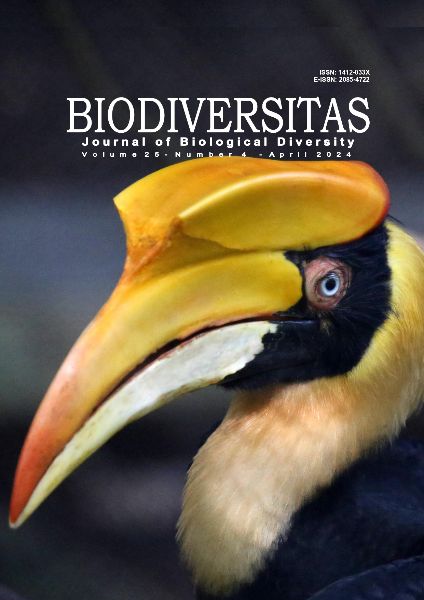Identification of molds producing aflatoxin from raw materials of free-range chicken feed in East Nusa Tenggara, Indonesia
##plugins.themes.bootstrap3.article.main##
Abstract
Abstract. Lengur EAR, Daten H, Nadut A, Lalong PRF. 2024. Identification of molds producing aflatoxin from raw materials of free-range chicken feed in East Nusa Tenggara, Indonesia. Biodiversitas 25: 1588-1595. The assessment of aflatoxin is an important determinant of animal feed quality. This study aimed to isolate, characterize, and identify molds responsible for aflatoxin production within raw materials used in free-range chicken feed. The isolation process follows the standard “pour-plate method”, with subsequent molecular characterization and sequencing using the Internal Transcribed Spacer (ITS) gene. Results indicated the highest concentration of mold cells in fish meal and moringa leaves, reaching 4.06 log CFU/g. Isolate KIJK1 exclusively appeared in fish meal, cornmeal, and moringa leaf meal, while isolate KIJKD1 was present in fish meal, cornmeal, moringa leaves, and bran meal. The colony morphology of isolate KIJK1 exhibited gray coloring with white edges, whereas, at five days old, isolate KIJKD1 displayed a green center with white edges. Isolate KIJK1 was further identified as Aspergillus fijiensis strain IHEM 18675, and KIJKD1 as Aspergillus flavus strain 2011F7, with both acknowledged aflatoxin producers. Mold contamination incidence hinges on substrate type, production processes, storage conditions, and nutritional composition. Consequently, periodic mold identification is recommended to maintain animal feed quality control.

